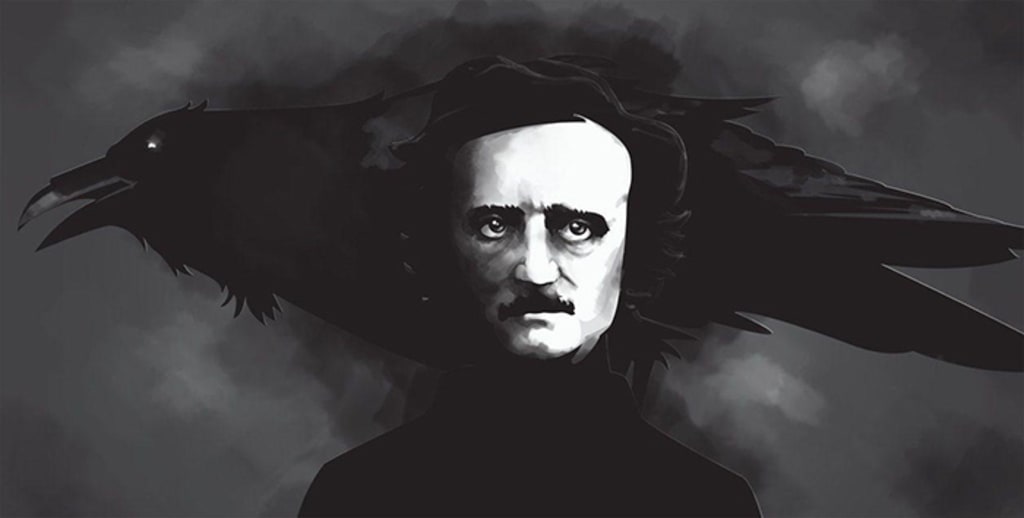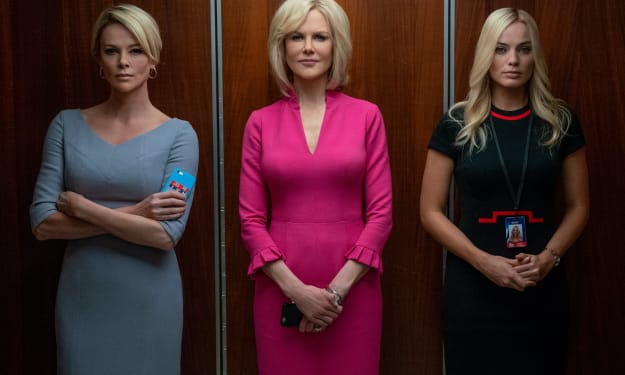Gender Roles in Edgar Allen Poe
Poe’s life wasn’t a happy one. It was marked by cruel and untimely deaths along with illness.

Edgar Allen Poe never wrote many female figures into his novels. If he did feature female characters, they were either unimportant to the story or killed off. Poe was a mysterious man who went through a lot of hardships. His biological mother died when he was only three, his adopted mom died from tuberculosis, and his marriages didn’t end well. Poe rarely had a female figure throughout his life, which may account to why there are so few women in his stories. All his stories seem to have a male lead, but over time critics have speculated that his story The Tell-Tale Heart may have a female narrator. When studying the text closely, there is no textual evidence that supports the narrator of the story is in fact male.
Poe’s life wasn’t a happy one. It was marked by cruel and untimely deaths along with illness. Although this misery was happening to him personally, the world was gaining new and exciting opportunities. Poe lived from 1809 to 1849, and during the final year of his life, the Women’s Rights Movement was starting. The Seneca Falls Convention happened in 1848, a year before Poe died. The Abolition and Temperance Movement were also happening during the 1840s.
Poe stopped writing by 1847 due to the death of his wife, Virginia. Whether there were women characters in his stories they were portrayed as: “Not able to defend themselves, but die, victims of sorry circumstances—perhaps a reflection of their lives of the many women lost to Poe in his lifetime.” (Thenatassa) Poe called the death of women poetic, but it wasn’t like that throughout his life. Poe had no intimate relations with women outside his family, even marrying his 13-year-old cousin, Virginia.
Virginia was the central female figure in Poe’s life. He hardly knew his own mother and went from an adopted mother to aunts and grandmothers, but none of them he was ever close with. The reason for the lack of female characters in his stories was because he barely had any growing up throughout his life: Poe longed for a mother figure: “Poe's feelings of motherlessness caused him to spend his life searching for maternal figures… the women Poe looked to all had a very maternal aspect as well as an intellectual or artistic one, and it can be said that perhaps Poe was looking for a cerebral nurturer rather than a corporeal wife.” (Grantz) The death of his biological mother affected him greatly.
Poe’s 1843 story, The Tell-Tale Heart, has gone through much speculation over whether the narrator is male or female. Over time no textual evidence has been found to support the narrator of the story is male. Gita Ragen, author of A Feminist Rereading of Poe’s The Tell-Tale Heart, comments: “Poe himself never indicates that the narrator is male, in fact, his text offers no gender markings.” (Ragen, 293) Ragen also found the language to be rather emotionally influenced to be said by a male: “The narrator’s hysterical utterances, extreme passion, obsessive desire, neurotic fears, and pathetic passion.” (293) If the narrator had been in fact male, then he doesn’t know the difference between what is real and the unreal. This doesn’t feel like a fair statement to our 21st century ears. It’s reflecting that women aren’t as smart as men. Ragen is challenging readers to think about the dialogue and what it may reveal.
During Poe’s lifetime, the 1800s were a tough time period for women to live. The Woman’s Suffrage Movement worked hard for years to get rights for women. Women were treated as a stay at home mothers who couldn’t do anything else. Elien Martens, author of Representations of Works of Edgar Allen Poe conjectures that: “Women are expected to be passive and nurturing, so if they transgress their stereotypical role, this will have greater consequences for them as well.” (Martens, 32) This possible female narrator wants a change in society. The narrator doesn’t want to be an object of the male gaze, so she kills the old man. She took power over the old man but went too far in doing so, both morally and because it makes her crazy.
Looking back through this story it is more understandable through a woman’s perspective. This makes a better explanation of how the narrator tells us that she loves the old man. It’s never specified what relation this old man is to the narrator, but he may be their servant. There is also never any mention if the narrator has any family or friend relations. If that may be, the old man is the only person the narrator has who can love them. Readers can feel for the female narrator because they’re described as a nervous wreck throughout the story.
There are multiple clues that it is a woman’s speaking voice narrating the story: “Would a madman have been so wise at this?” (Poe, 715) This isn’t the first time the narrator quips about madmen. This utterance of the word automatically makes readers believe that this narrator is male. She’s comparing herself to a man asking how any gender could have done this horrible crime any differently. The narrator also wants and craves attention. The kind of attention is unspecified, but if she does marry, she wants to marry out of love, not to become a housewife.
The narrator hates the old man because of his eyes: “I think it was his eyes—yes, it was this! Whenever it fell on me, my blood ran cold... and so, by degrees—very gradually—I made up my mind to take the life of the old man, and thus rid myself of those eyes forever.” (Poe, 715) Reading this through a woman’s perspective puts more of a reason into the narrator's motives to kill the old man. She gets rid of the old man in order to be the dominant one but tends to flip flop over the way she wants to be seen. This is noticeable at the end where she is having a conversation with the police. She acts submissive in the conversation.
The female narrator hates what society has done to women. Throughout this story, the narrator wants and craves attention so much that she accidentally kills a man. They want the readers to understand them: “You should have seen… you would have laughed…” (Poe, 715) She is afraid of what others will think of her actions because this is a deadly crime that has been committed. At the very end when the police have dropped in, the narrator cannot contain herself. She is so overcome with guilt that she can hear the heart of the victim pumping in her head. The police obviously have a dominant male gaze over her, and she falls for this. The narrator becomes so paranoid to the point where she cannot think straight, believing that these two policemen; “They suspected! They knew! They were making a mockery of my horror!” (Poe, 718)
Poe often portrayed women as mentally stronger, but still, they function as reflections of male desire or objects of the male gaze. Poe writes himself as the narrator, but through a possible female perspective to show how they need one of the parental figures in their life. Poe leaves the sex of his narrator in The Tell-Tale Heart unclear because he wanted to leave it up to the readers. Gender played a huge role throughout the early centuries, which is played out a lot through movies and novels. This also gives insight on how the women never get happy endings. The Tell-Tale Heart brings out such a different perspective when replacing the narrator as a female. The whole story makes better sense and more can be read into all the background points made.
Works Cited
Poe, Edgar Allen. The Tell-Tale of the Heart. The Norton Anthology of American Literature. Edited by Nina Baym, shorter eight edition. Volume 1, W.W Norton, 2013, pg. 712-714.
Tenika. Gender and Identity in Poe's The Tell-Tale of the Heart. September 21, 2012, December 2, 2016. Wordpress.com, https://baatblog.wordpress.com/2012/09/21/gender-and-identity-in-poes-the-tell-tale-heart/
Martens, Elian. Representatives of Women in the Works of Edgar Allen Poe. November 30, 2016.
Thenatessa. How Does Edgar Allen Poe Portray Women in His Tales. Feb. 23, 2012, November 30, 2016. enotes, http://www.enotes/homework-help/how-edgar-allen-poe-describes-women-in-his-tales-317469
Grantz, David. Edgar Allen Poe’s Relationship with Women. March 8, 2011, December 7, 2016. http://www.helpfulresearch.com/edgar.html
About the Creator
Marielle Sabbag
Writing has been my passion since I was 11 years old. I love creating stories from fiction, poetry, fanfiction. I enjoy writing movie reviews. I would love to become a creative writing teacher and leave the world inspiring minds.






Comments
There are no comments for this story
Be the first to respond and start the conversation.